For beginning aquarists the choice in fish you are confronted with when stepping into a fish store might be a bit confusing. The fact that staff is often not helpful at all and will usually give you bad advice doesn’t make things easier. Which fish are easy to care for and won’t go belly-up at the slightest beginner mistake, but are also active and fun to watch?
Keep reading for a short list with a few good beginner choices!
Note: As you can see in the requirements of these fish, it’s best to get at least a 15 gallon (57L) aquarium. This way, mistakes will have a smaller impact and there are more choices when it comes to fish.
For more information on which fish to definitely avoid when setting up an aquarium as a beginner, check out Aquariadise presents: the 8 worst beginner fish.
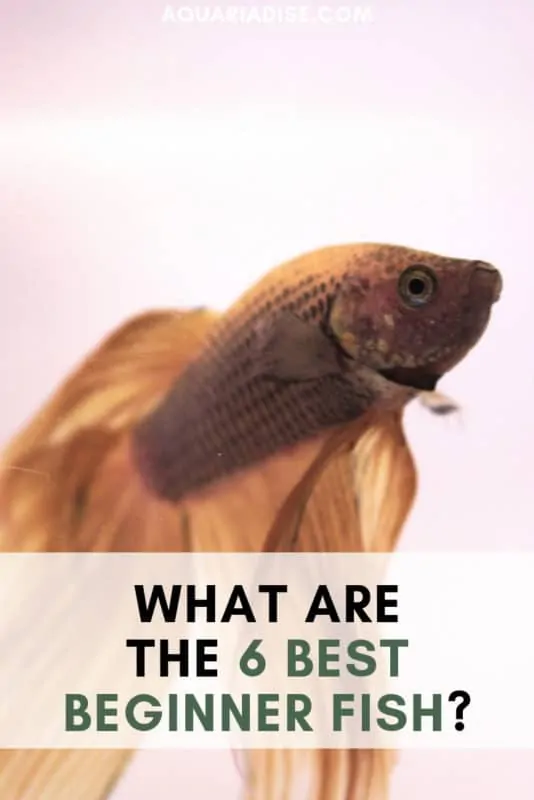
Pygmy and dwarf Corydoras (Corydoras pygmaeus, hastatus, habrosus)
Pygmy and dwarf Corydoras (pictured above) are one of the smallest Corydoras catfish varieties available. They are suitable for beginners who are setting up an aquarium with only peaceful fish and invertebrates, as they are very docile, won’t eat baby dwarf shrimp and will not form territories or bother other fish. Their behaviour is often described as “cheerful” because they are very active and always looking for food. They are especially perfect for planted shrimp aquariums.
Keep pygmy Cories in groups of at least around 8 (they will become shy and scared in smaller groups) in a cycled, heated aquarium of 10 gallons (38L) or more. The substrate should be sand. Filter or river sand is best, as Corydoras like to dig around the bottom and gravel wears down their barbels, permanently leaving them unable to properly search for food.
For more info on pygmy Cories, check out the Pygmy Corydoras caresheet.
Harlequin rasbora, red rasbora (Rasbora heteromorpha)
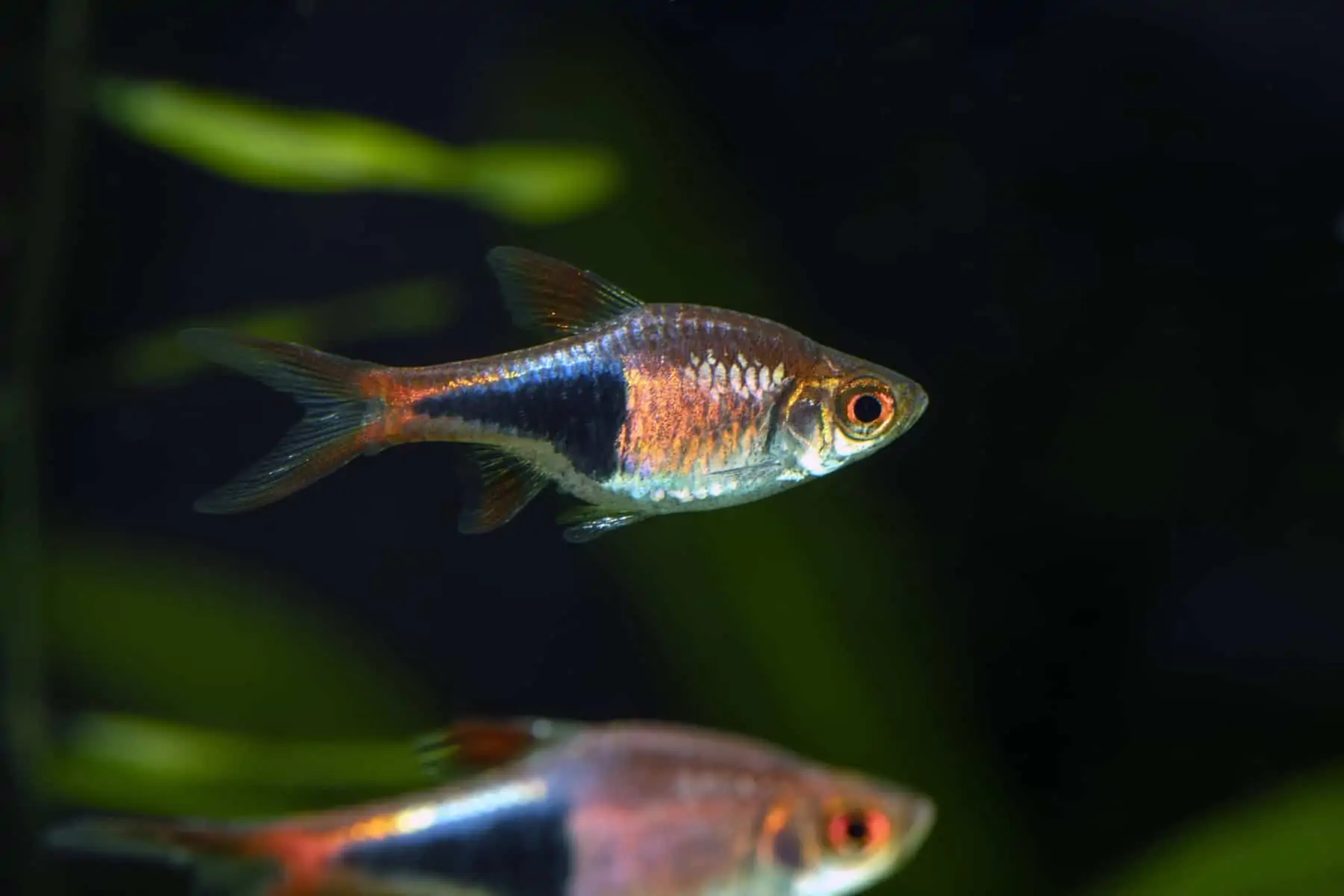
Harlequin rasboras are active, peaceful shoaling fish that, in the wild, inhabit peat swamp forests in Asia and therefore prefer slightly acidic waters and dark substrate in the aquarium. They can adapt to many types of water values, though, as long as the water is clean and nitrite and ammonia values are always at 0.
When kept in groups of at least 6-7, these little fish will usually school very well, making them a wonderful focal point and a long-time favourite in the aquarium hobby. Few things look better than an aquarium with a group of at least 20 schooling fish elegantly swimming around together!
Keep harlequin rasboras in cycled aquariums of at least around 13 gallons (50l). Planted aquariums seem to be preferable, along with tankmates that are peaceful and non-territorial. The pygmy Corydoras discussed above make a great choice.
Endler’s guppy (Poecilia wingei)
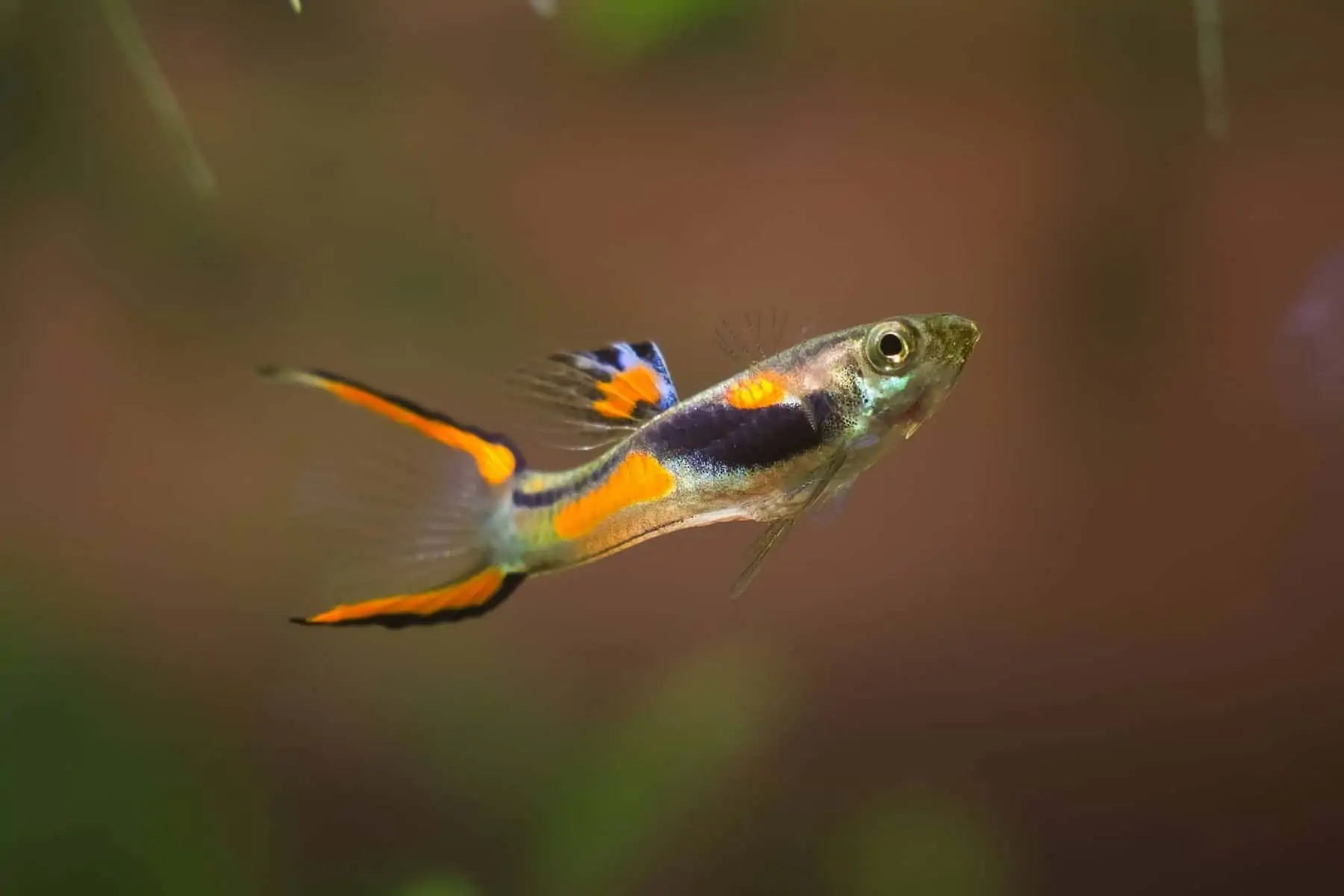
Guppies have always been popular as beginner fish because of their fancy colors, but unfortunately most fancy guppies have been over-medicated and inbred for so long they’ve become weak and susceptible to illness – making it quite the challenge to care for them, which is completely the opposite of what a beginner wants. But do not despair!
Endler’s guppies are a wild form of guppy. This means they are usually much hardier than fancy ones. They are active and fun to watch, often eventually recognizing when food will appear, which results in “begging” and following people who are near the aquarium. The males are beautifully colored.
Like all guppies, Endler’s guppies are prolific breeders. If you don’t have space, time or money to deal with them constantly producing offspring, consider a male-only group. Keep Endler’s guppies in a group in a cycled aquarium of at least around 15 gallons (57l). Contrary to popular belief, guppy tanks should be heated – 75-81 °F / 24-27 °C is ideal. Try to avoid tankmates that are too aggressive or ones that prefer very calm tank mates.
White cloud mountain minnow (Tanichthys albonubes)
This shoaling fish may be tiny, but that doesn’t mean it can’t be a beautiful centerpiece. Its beautiful colors, active schooling behaviour and hardiness make it a great choice for beginners. The temperature range they are naturally exposed to (41-86 °F / 5-30 °C) means they can be kept in many types of settings as long as temperatures don’t fluctuate too much: unheated indoor aquariums, outdoor ponds during the summer months and regular tropical aquariums, although the temperature in these shouldn’t be too much higher than 73 °F / 23 °C.
Keep your white cloud mountain minnows in groups of at least 6 (more is better!) in an aquarium of at least around 15 gallons, as they love to swim. Some hiding places in the form of rocks or plants and a large open space in the middle seems to be ideal for them.
If you’re interested in keeping these minnows, check out the White cloud mountain minnow caresheet.
Betta (Betta splendens)
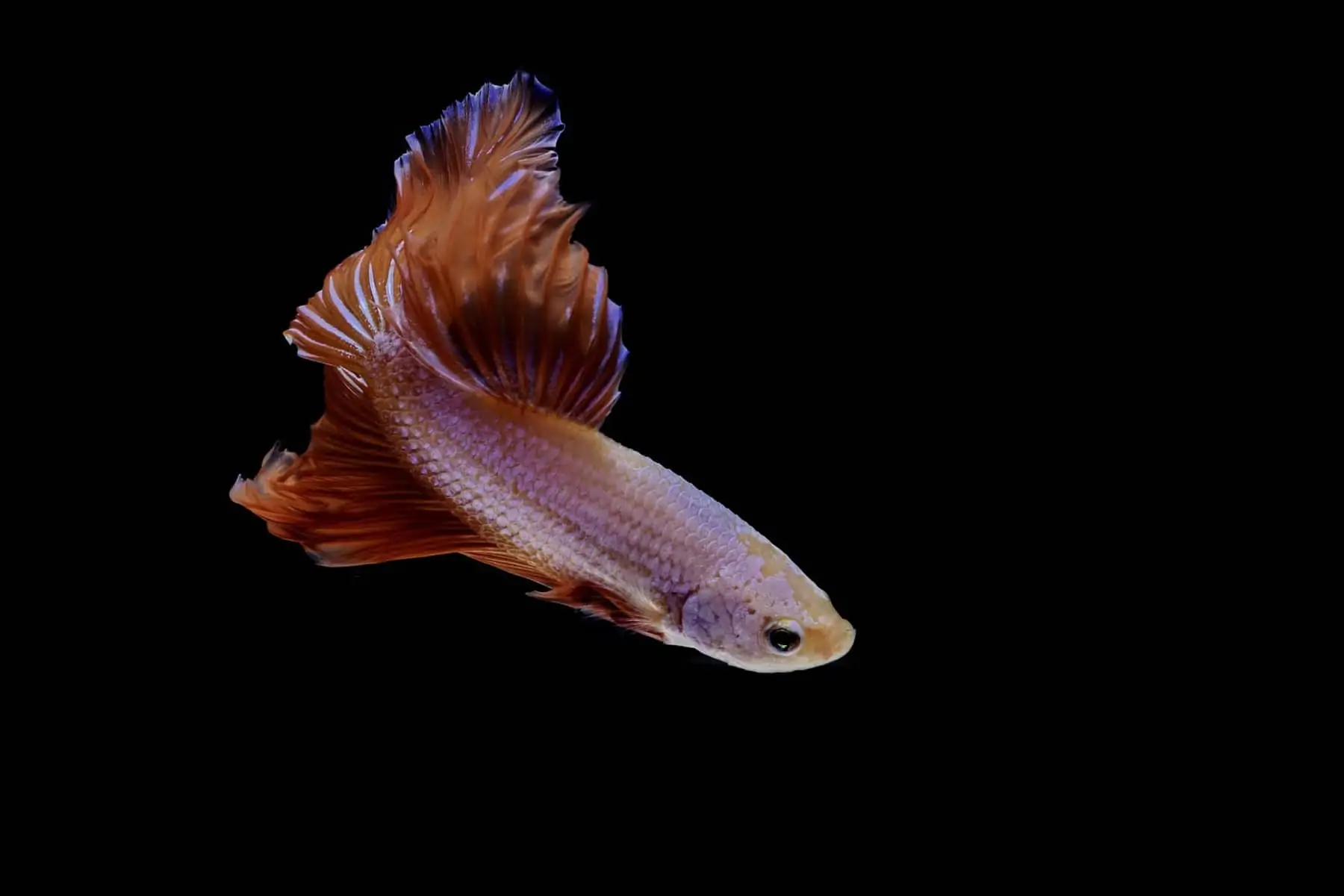
Although they are often treated badly, kept in small unfiltered, unheated bowls, vases and tiny tanks and regarded as “decorations”, which often kills them within a few weeks or months, a well-housed betta is actually very easy to care for. They can withstand a broad range of water values and their attractive colors and fun personality make them perfect for anyone who is looking for a beautiful fish to really interact with.
A single betta fish (the ones sold in pet stores are usually male) can be kept in a well-planted aquarium of at least 5 gallons (20 l) as long as it’s cycled and heated. If you want to keep your betta with other fish, go for an aquarium of at least 10-15 gallons (~40-55l). Choose your Betta tankmates carefully, as bettas can be aggressive and territorial and prefer to be around calmer fish.
If you’re considering purchasing a betta, have a look at the betta care sheet for more information on keeping them.
Zebra danio (Danio rerio)
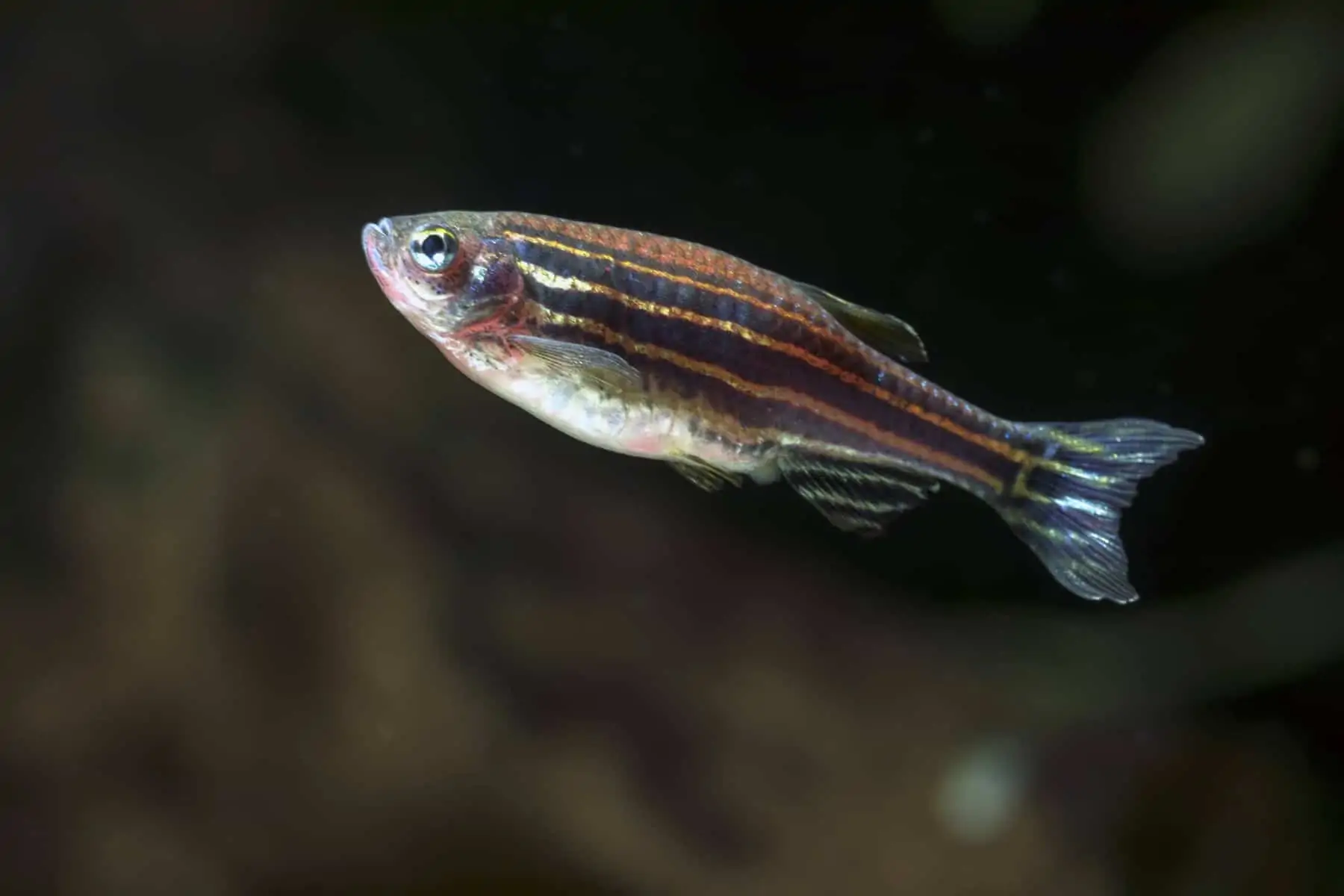
The zebra danio is a shoaling fish that’s been around in the aquarium hobby for many years. They are active, pretty, quite hardy and, when provided with the right care, can live for up to 5 years. One factor that often leads to premature death in zebra danios is temperature – they actually don’t do very well in fully tropical temperatures and will live much longer when kept at 64-74 °F / 18-24 °C. This means they can be kept in ponds during the summer months and, in some climates, permanently!
Zebra danios grow to an adult size of 2 inches (6 cm) and are active swimmers so keep them in a long aquarium – a 20 gallon (75l) is ideal and will give them plenty of room to swim. They are generally quite peaceful and will leave most tankmates alone, but be careful with fish that have long fins as they might be nipped at.
You can find a full zebra danio caresheet here.
Hopefully this list has made choosing the right fish for your tank a little bit easier. If you’re looking for some additional info or if you think I forgot to include a fish, leave a comment below. Happy fishkeeping! And if you’re about to start your first aquarium, good luck.

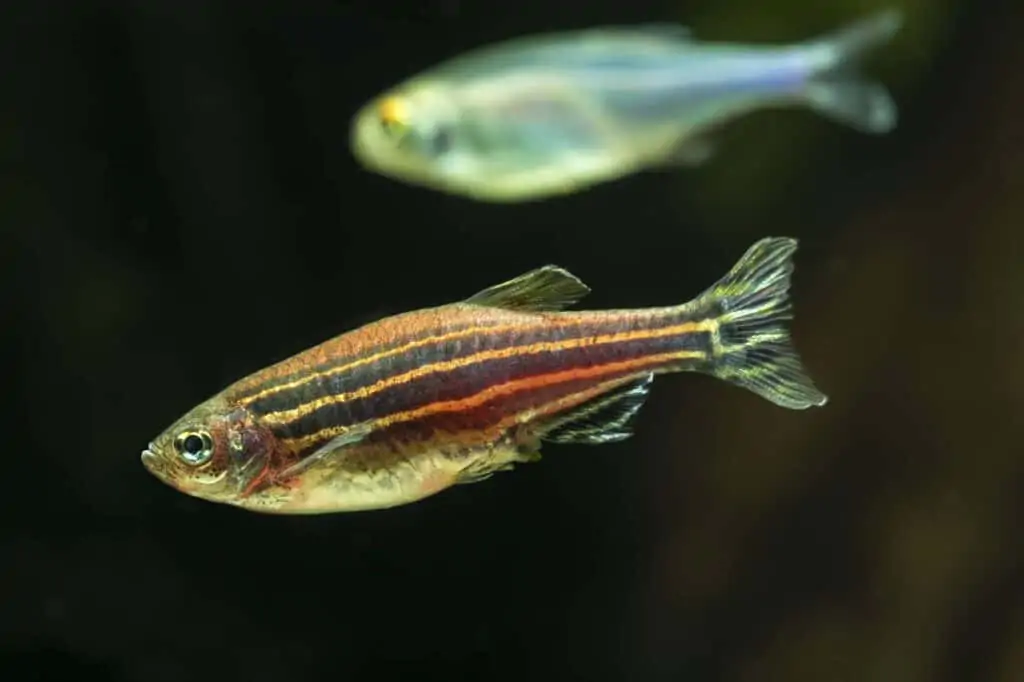

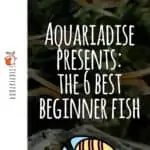
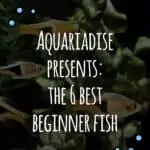
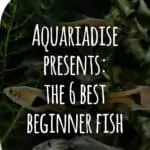
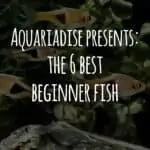

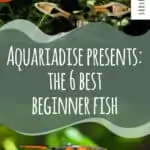


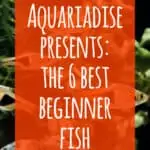

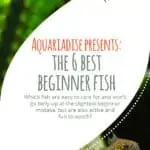
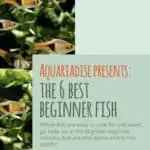
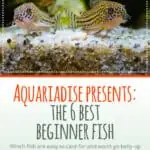


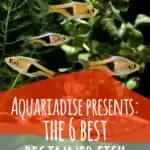
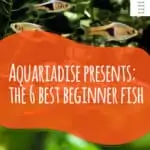

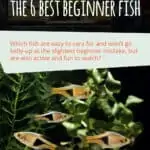

Hi! I’m a beginner fish owner and want a small community tank. A 10-20 gallon and heated. I was wondering what fish you would recommend for a person with my experience and for that tank size without overcrowding it. Also can there be snails in there? Thank you for being a great resource for my fish research adventures and i hope you get back yo me soon.
Hi! First off, there is a big difference between a 10 and a 20 gallon in terms of what you can keep in there. If you want to have a wider choice range I would definitely do a 20. If you want to go for a 10 gal instead maybe have a look at this article.
In a 20 gallon you can keep ~2-3ish fish species and some inverts. Make sure all live in different water layers to prevent a messy look. No large fish please – 20 gallons is still pretty small. I can’t tell you ALL the options out there but here are some quick things I thought of. All of these can be combined, you can pick one from each category but try not to do more than 2 schools in total. Some have caresheets on here, try entering the name in the search bar. These are all relatively “standard” stocks but great for beginners and very entertaining.
Bottom feeders (need sand substrate): 8x kuhli loach OR 12x Corydoras pygmaeus/habrosus OR 8x Corydoras panda
Middle water layer: 15x microrasbora OR 10x neon tetra OR 8x Iriatherina werneri OR any other small schooling tetra or rasbora OR 1M 2F Badis badis (don’t combine with gourami or killifish)
Top water layer (these like floating plants): male/female honey gourami pair OR 8x marbled hatchetfish OR 8x clown killifish
Inverts: cherry shrimp (be careful with killifish/gourami/Badis badis), Amano shrimp, small snails, dwarf crayfish
I hope that helps 🙂
I have a community tank for tropical fish and I would really love to have some colored fish, have any ideas on which fish I should get?
I sure do, I’ve got an entire article on colorful fish! You can find it . Be sure to always research whether you can combine certain fish species and whether your tank is large enough 🙂
I hope that helps!
hi, i love this website! i have recently gotten a 10 gallon tank with gravel as a substrate and was wondering what a good schooling fish would be that is compatible with ghost shrimp.
Hello! A 10 gallon is definitely on the small side for most schooling fish, but if it’s a long tank (rather than a square or tall one) you could try looking into microrasbora. Those should probably work. Good luck! 🙂
Hi!! I just started cycling my new 55gal tank. It is approx.: 48inLx12inWx16H. I’m having issues with my getting the water suitable for stocking my tank. The water is testing at very soft, an alkalinity level of 300, and a pH of 7.5-8.0…it is supposed to be a freshwater tank, but it seems to me like it is testing at saltwater levels. Do you have any suggestions, perhaps natural ways of getting my levels in a safe range for a community tank? Oh btw, I have the Caribsea substrate.
Hi! I’ve never had many problems with this so I’m not an expert. This explains it very well, though. If the water in your home goes through a softener it would definitely be a good idea to bypass it.
Good luck! 🙂
Your site seams pretty insightful. I’m new to aquariums and have done some decent research that has still left me with some basic questions. I have a 10g tank with a waterfall filter and sand. The tank only has a rock I got from the reptile Isle to add a desert look that I mostly use to keep the waterfall from making a crater in the sand. The tank only has 4 siamese algae eaters that I use to ward off the looming black algae that plague my tank when I first set it up and 2 tiny snails who clean the glass. A task they have diligently kept up on bless their little fish souls. They’ve survived for almost a month on nothing more than black algae and algae tablets. The question is regarding water changes. How often should i perform them, and how should they be done in a manner that keeps my fish safe? I have trying to plant flora unsuccessfully to maintain a balanced ecosystem, but the plants sort of fade away.
Glad you’re finding the site useful, and great to hear you’re trying to do proper research 🙂
I’m sorry to tell you that unfortunately Siamese algae eaters are extremely unsuitable for life in a 10 gallon, so I would rehome those or return them to the store asap. They get much too large. 5 Otocinclus algae eaters would be a great choice, though, they are better at eating algae and stay tiny.
As for water changes, they’re usually done once a week (unless you’ve got an overstocked goldfish tank or something like that). How much water you should change is something you figure out using your liquid test kit: as much as needed to get the nitrates back to a good range (ammonia and nitrite should always be at 0). As your tank is currently overstocked until you rehome the algae eaters, I would change at least 30-40% a week. You can do your water changes with a hose covered with some mosquito netting to prevent fish from being sucked in without making it impossible to suck up debris.
As for plants, they can definitely help with balancing your tank. Which have you tried? I’m not sure if you’ve had a look yet, but the plants in this article are super easy and should work well in almost any tank.
Good luck! 🙂
I bought a handful of fancy guppies for my pond (i live in indonesia), and I have found that they will revert to the endler’s form when bred in murky water for a few generations
Hi! I was wondering if you think i should get a puffer fish. Just one in a ten gal. Ive never had a fish before but Im trying to be as informed as possible. Thing is im a bit tight on cash but i think i can spend like 50-100$. How much do you think itll cost me? I understand i have to cycle the tank before adopting the fish but do you think i should wait till i have all the plants or could I start out with a few plants and keep adding while he’s already in there? I would like for there to be many plants for him like in that picture that is on this post.
Hi! I think it should be possible if you do things right and think everything through, which you seem to be doing.
I usually manage to find a tank with all the supplies used, a 10 gal would probably set me back around $50 although I’m not sure what it’s like in your area. A new aquarium with new supplies is a lot more expensive. The required water testers, siphon etc. are probably around $30. Decorations and plants don’t have to cost that much, you can usually buy them from other fishkeepers for a great price. Also important: you HAVE to have at least a $25 emergency fund. If the filter or heater breaks, you can’t wait for your next paycheck! You have to buy a new one immediately.
As for the plants, the tank should be relatively well planted before you add the fish. This is a puffer specific thing – without lots of decorations they get bored very easily! It doesn’t have to be crazy planted, though, that will come with time. IF you haven’t found the dwarf puffer caresheet yet, it contains all the info you need and can be found here!
Good luck! If you decide to go through with this, let me know how it turns out. 😀
Hi i had a quick question about guppies. My wife and i got a 10 gal tank about 5 1/2 weeks ago now, we made the mistake of not cycling it long enough, maybe a day we did. we got 2 female and one male, the male died on the third day, and just the other day one of the females died, she got really bloated and the next day she was on the bottom dead. is there anything i should be doing to prevent them from dieing so fast?
Yes, you should be doing water changes at least every other day to keep ammonia values down. Keep a very close eye on the water values by testing frequently with a drop test kit. Fish-in cycling is a pain, so it may take up to 6 weeks to establish a stable cycle.
Good luck!
Love your site. I’m just starting out, and I really wanted to use a large (16″ tall by 10″ wide) glass container as a small aquarium. Are there fish that would be ok without a filter? Or is there a small battery powered filter I can use for a container like this?
Hello! Glad you like the site. 🙂
Tall containers unfortunately aren’t the most suitable for aquarium use due to the lack of swimming space. If you do want to use it, keep in mind that it’s very small and due to this and the dimensions most suitable for inverts such as cherry shrimp (there’s a caresheet for them here!) or maybe Thai micro crabs. A betta would be okay size-wise, but they should be kept in a rectangular aquarium. All aquariums require a filter; if you do decide to keep dwarf shrimp, a simple sponge filter should be enough!
Good luck 🙂
Hello,
I’m a beginner and I will start exploring the world of fishkeeping with guppies! I’m thinking of setting up an all male guppy tank. I keep hearing/reading that live plants are better than manufactured plants for aquariums but I don’t know much about them & their caring tips (most require CO2 and the whole thing seems “professional” to me, not sure I’m right though). I also don’t know which plants to use for the guppies I will keep.
Which live plants would you recommend, at the same time considering I’m a beginner? Would you recommend manufactured plants instead of live plants?
Live plants for sure! There’s an article on Aquariadise especially for people in your position: 8 easy aquarium plants 🙂
Thank you very much! The other page is very helpful. Definitely bookmarked this website for further reading =D